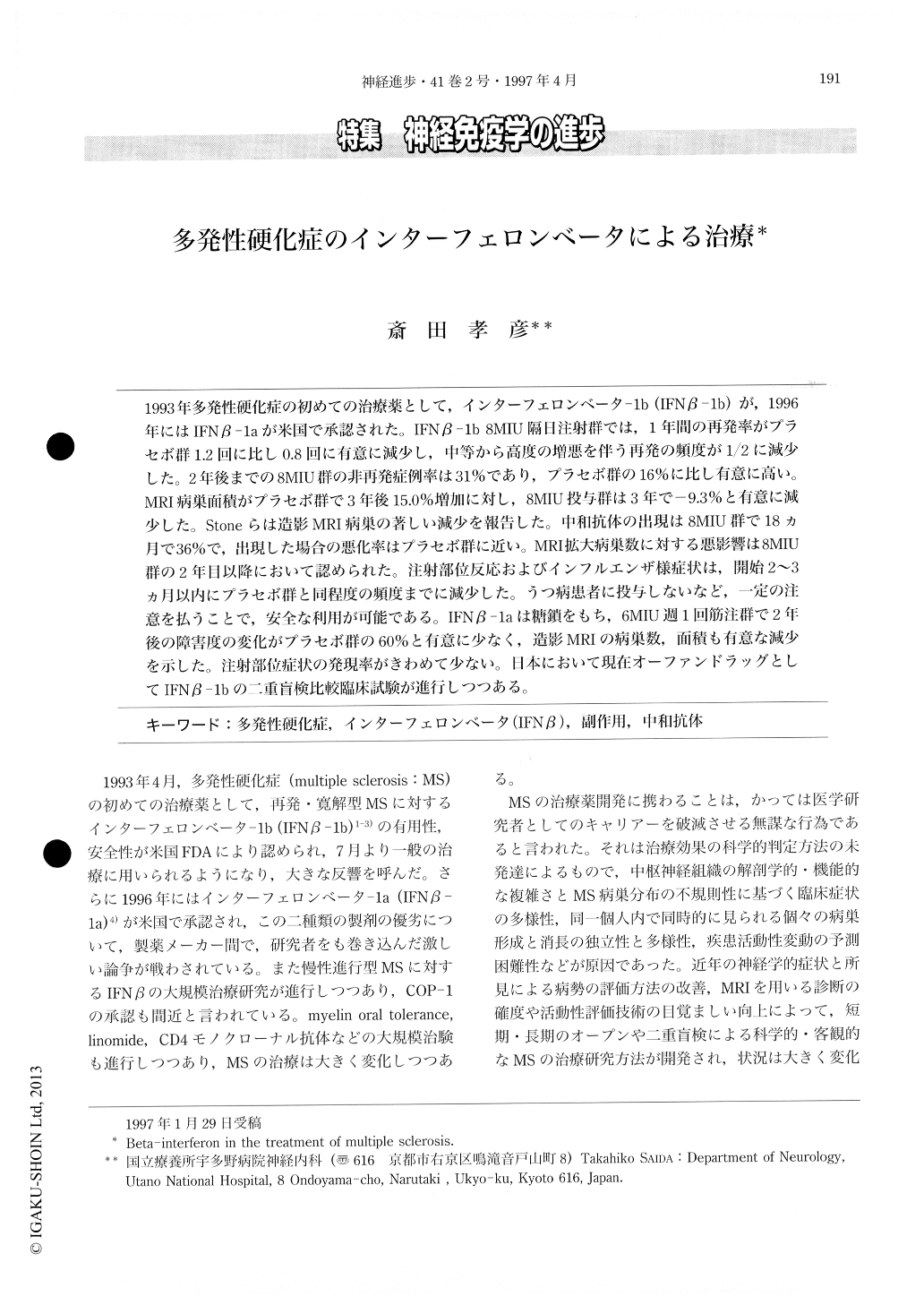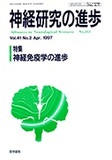Japanese
English
- 有料閲覧
- Abstract 文献概要
- 1ページ目 Look Inside
1993年多発性硬化症の初めての治療薬として,インターフェロンベータ-1b(IFNβ-1b)が,1996年にはIFNβ-1aが米国で承認された。IFNβ-1b 8MIU隔日注射群では,1年間の再発率がプラセボ群1.2回に比し0.8回に有意に減少し,中等から高度の増悪を伴う再発の頻度が1/2に減少した。2年後までの8MIU群の非再発症例率は31%であり,プラセボ群の16%に比し有意に高い。MRI病巣面積がプラセボ群で3年後15.0%増加に対し,8MIU投与群は3年で-9.3%と有意に減少した。Stoneらは造影MRI病巣の著しい減少を報告した。中和抗体の出現は8MIU群で18ヵ月で36%で,出現した場合の悪化率はプラセボ群に近い。MRI拡大病巣数に対する悪影響は8MIU群の2年目以降において認められた。注射部位反応およびインフルエンザ様症状は,開始2~3ヵ月以内にプラセボ群と同程度の頻度までに減少した。うっ病患者に投与しないなど,一定の注意を払うことで,安全な利用が可能である。IFNβ-1aは糖鎖をもち,6MIU週1回筋注群で2年後の障害度の変化がプラセボ群の60%と有意に少なく,造影MRIの病巣数,面積も有意な減少を示した。注射部位症状の発現率がきわめて少ない。日本において現在オーファンドラッグとしてIFNβ-1bの二重盲検比較臨床試験が進行しつつある。
Results of a double-blind, placebo-controlled study in ambulatory patients with relapsing-remitting MS showed that interferon beta-1b reduced the rate of exacerbations by one-third compared with placebo and limited new disease activity in the brain as evidenced by MRI. Interferon betalb, administered subcutaneously at a dosage of 8 million (M) IU every other day is indicated for the treatment of ambulatory patients with relapsing-remitting MS. The most common adverse effects include injection-site reactions and flu-like symptoms, which are generally manageable and usually abate after the first few months of treatment.

Copyright © 1997, Igaku-Shoin Ltd. All rights reserved.


